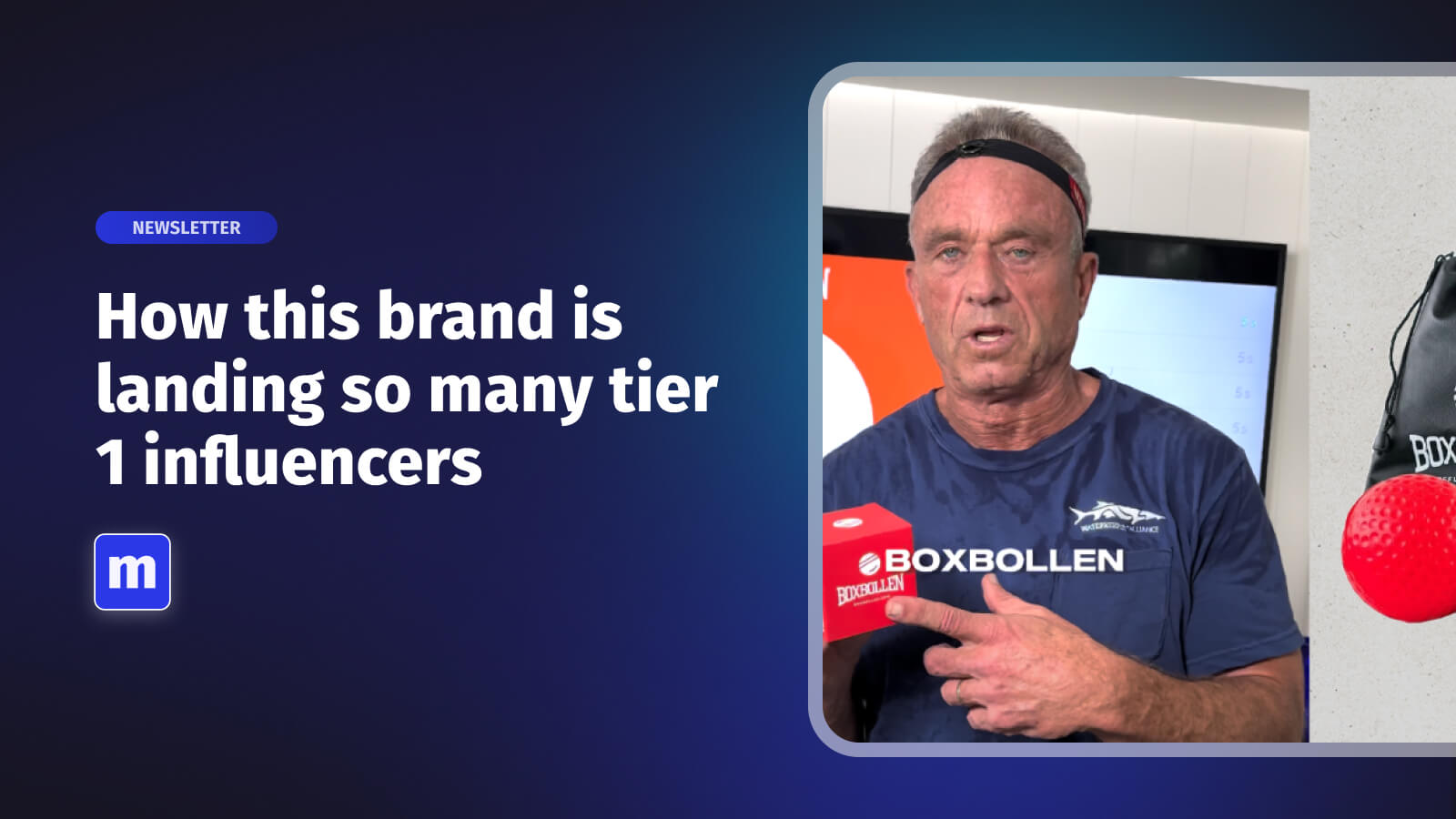.jpg)
Welcome to the chaotic realm of online shopping, where consumers are bombarded with an overwhelming number of choices and an avalanche of information. In this post, we'll dive into the messy online shopping experience and explore why consumers find themselves lost amidst a sea of options. Truly understanding where your consumer is coming from can drastically change and improve the way you position and sell your products online. From the trust crisis to the constant barrage of advertisements, we'll unravel the complexities and share some insights that shed light on this shopping frenzy.

The Paradox of Choice
It's a paradoxical reality: while having numerous options seems like a dream come true, it often leads to indecision and confusion. Research studies have shown that when faced with an excessive number of choices, consumers tend to experience decision fatigue, leading to dissatisfaction with their final selection. According to a study conducted by psychologists Sheena Iyengar and Mark Lepper, too many choices can leave consumers feeling overwhelmed and less satisfied with their purchase.
To counter fatigue and make decision-making easier, brands should provide clear and concise product information, including detailed descriptions, specifications, and customer reviews. This information should highlight key features, benefits, and use cases, enabling consumers to quickly assess the suitability of a product for their needs.
One example of a brand that excels in providing clear and concise product information is Apple. Apple's website and product pages are known for their meticulous attention to detail and comprehensive information. Here's how they achieve this:
- Detailed Descriptions: Apple provides thorough descriptions of each product, highlighting its key features, technical specifications, and functionalities. They use concise and easily understandable language to communicate the product's capabilities and benefits.
- Interactive Visuals: Apple utilizes interactive visuals, including high-quality images, videos, and 360-degree product views, to showcase the product from various angles. This allows consumers to get a closer look at the product and its design, enhancing their understanding and assessment of its suitability.
- Use Cases and Examples: Apple includes real-world use cases and examples to demonstrate how their products can be integrated into customers' lives. They showcase different scenarios and highlight the benefits and solutions that the products offer, helping consumers envision the product's potential.
- Customer Reviews and Ratings: Apple incorporates customer reviews and ratings into their website, allowing potential buyers to read feedback from other users. This social proof helps build trust and provides additional insights into the product's performance and user experiences.
- Simplified Comparison: Apple facilitates product comparison by offering side-by-side comparisons on their website. This feature enables consumers to evaluate different models or configurations based on their specifications, helping them make more informed decisions.
By presenting comprehensive product information in a user-friendly manner, Apple empowers consumers to quickly assess the suitability of their products and make confident purchase decisions. This approach contributes to a smoother online shopping experience, reducing the feeling of being overwhelmed by excessive choices.

The trust crisis
In the digital era, trust has become a valuable commodity. With countless online sellers vying for attention, consumers are rightfully cautious about whom to trust. They are no longer willing to rely solely on traditional advertising. Instead, they turn to fellow consumers for guidance. Online reviews have become the go-to resource for building trust. Sites like YouTube, Reddit, and Trustpilot offer platforms where shoppers can seek authentic feedback and opinions from real people who have experienced the product or service firsthand.
But very quickly, shoppers end up with dozens of tabs open all at the same time browsing feedback from anonymous strangers online. And while sites like YouTube, Reddit, and Trustpilot provide valuable platforms for seeking feedback, opinions, and reviews, the abundance of information available can indeed become overwhelming for consumers. The sheer volume of content and varying perspectives can make it challenging to navigate and make confident decisions.
With countless reviews, comments, and discussions available, consumers can feel inundated by an overwhelming amount of information. Processing and synthesizing this vast array of opinions can be time-consuming and mentally exhausting. To make things more complicated, different individuals have diverse experiences and preferences, leading to a wide range of opinions on products or services. Shoppers often encounter conflicting viewpoints, making it challenging to determine which sources to trust and which reviews align with their own needs and preferences.
These online platforms also often contain subjective reviews influenced by personal biases, emotions, or even sponsored content. Consumers need to filter through biased or exaggerated opinions to find genuine and objective feedback that aligns with their decision-making process. Context is a less talked about but important factor: online reviews may lack the necessary context for consumers to fully assess their relevance to their specific situation. Factors such as the reviewer's background, expectations, or usage scenario may differ from their own, making it difficult to apply the information directly to their purchasing decision.

The role of social media
In the age of social media, brands are constantly competing for attention in users' feeds. While these platforms allow for targeted advertising, the incessant stream of ads can be overwhelming. Consumers find themselves bombarded with enticing offers and new options, making it increasingly challenging to filter through the noise. According to Ad Lock, the average person is exposed to more than 6,000 to 10,000 ads per day! This saturation of ads can lead to ad fatigue, making it difficult for consumers to find their "aha" moment (more on this below).
To combat the constant stream of advertisements, consumers actively take measures to reduce ad exposure. They employ ad blockers, browser extensions or plugins that filter out intrusive ads during their online browsing. Additionally, consumers skip or fast-forward through ad breaks in videos and TV shows, utilizing features that allow them to bypass advertisements. Some choose to pay for ad-free versions of platforms or services, enjoying uninterrupted content for a fee. Consumers also selectively consume content on platforms that prioritize ad-free experiences, seeking out channels and services that align with their preferences. These actions reflect a growing desire among consumers to regain control over their online experiences and minimize the overwhelming presence of ads.
Seeking Validation and the Proverbial “Aha” Moment
To make informed decisions, consumers often seek validation from multiple sources. They browse social media pages, read product reviews, and ask for recommendations from friends. The desire for a magical realization, the "aha" moment when they discover a brand that resonates with them, drives them to gather as much information as possible. According to a survey by BrightLocal, 91% of consumers read online reviews regularly or occasionally to help them make purchasing decisions. These diverse sources of information can create both excitement and confusion, contributing to the overall messiness of the online shopping experience.
The quest for the elusive "aha" moment - that moment when consumers find a brand that truly resonates with them to the point where they’re ready to add-to-cart and checkout, fuels their desire to gather as much information as possible. Engaging in conversations with other customers becomes a valuable avenue for achieving this magical realization more quickly. By actively seeking out the experiences and opinions of fellow shoppers, consumers can tap into real-world insights that go beyond marketing messages. That’s where a platform that facilitates these conversations like Moast becomes critical to a brand’s online shopping journey. Engaging in these conversations allows consumers to gain a deeper understanding of how a brand's products align with their needs, preferences, and values. It enables them to leverage the collective wisdom of other customers, accelerating the process of finding that "aha" moment and discovering a brand that feels just right.
Conclusion
Online shopping, while convenient, can be an overwhelming journey. The surplus of options, the trust crisis, and the constant barrage of advertisements all contribute to the messy nature of the experience. As consumers, it's important to be mindful of the challenges and take steps to navigate this jungle effectively. Brands, on the other hand, must strive to build trust, offer personalized experiences, and simplify the decision-making process for their customers.
In this digital age, where messiness seems to prevail, let's embrace the adventure of online shopping, armed with the knowledge and tools to make informed choices and find that magical "aha" moment amidst the chaos.
Related content
Turn your social content into a revenue channel
Turn your TikToks and Reels into shoppable videos and boost conversions by 3.5x.













